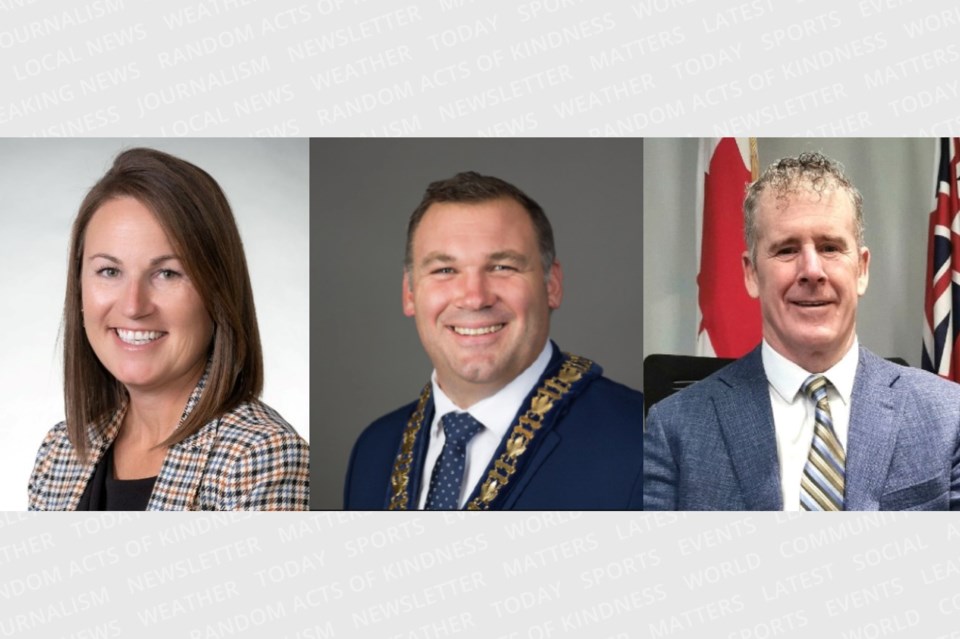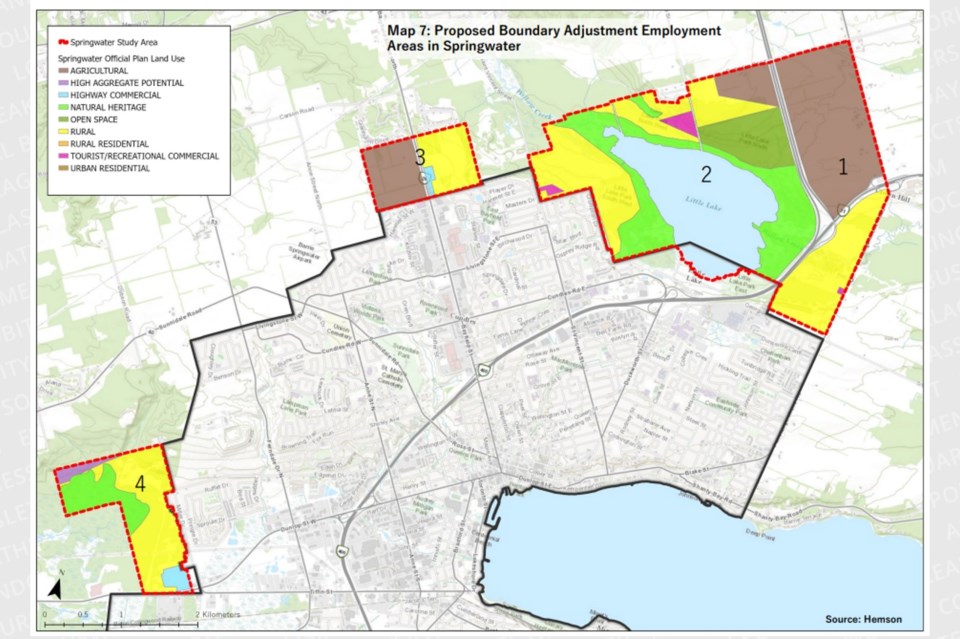The joint land-needs analysis and study makes Barrie’s case for boundary adjustments, says Mayor Alex Nuttall.
“The report was a success,” he said. “The report states that the case for Barrie is: ‘relatively strong – for community areas and for comprehensive community/employment area uses.
"‘If undertaking annexation, should consider including employment as well as community area lands'," the mayor added.
Annexation moves jurisdiction for land from one municipality to another, according to the Ontario government.
Barrie city council will hear a presentation at Wednesday's meeting on the Hemson Consulting study, receive the report at its meeting and consider approving a more detailed analysis, as will the councils of Springwater Township and Oro-Medonte Township the same day.

But materials from the presentation Hemson will make Wednesday also state the "case for additional lands for Barrie is: relatively weak – for only employment areas."
Hemson also says Barrie likely has sufficient employment area land to meet long-term demands through 2051, although a short-term gap exists in shovel-ready parcels. The city is prioritizing infrastructure expansion in south Barrie to address this issue, Hemson says.
Annexation of additional land would not resolve the immediate shortfall due to multi-year timelines for land-use and infrastructure planning and development, Hemson says.
Land in south Barrie holds a competitive advantage over proposed boundary adjustment land in Oro-Medonte and Springwater, Hemson says, "due to superior infrastructure, proximity to hubs and fewer constraints."
The Toronto planning consultant also says Springwater and Oro-Medonte have sufficient long-term employment land until 2051, but accelerated housing growth in Springwater’s Midhurst Secondary Plan Area may necessitate expedited designation of additional employment land to maintain balanced community development.
When contacted by BarrieToday, both Springwater Mayor Jennifer Coughlin and Oro-Medonte Mayor Randy Greenlaw declined comment.
Community areas are centred around housing and the supporting infrastructure, services and local retail employment necessary to sustain residential communities.
Oro-Medonte and Springwater have sufficient community area land supply to meet their respective growth forecasts to 2051, Hemson says.
While Barrie’s need for employment area expansion is limited, Hemson says, the city will be facing challenges to accommodate its forecast residential growth within its existing designated greenfield areas due to unachievable density assumptions. Addressing community area shortfalls is critical to meet forecasted housing demand.
Future municipal boundary expansions, if required, Hemson says, should integrate both community and employment area needs to foster balanced growth and complete communities and recognize the longer-term planning horizons to consider in such processes.
Hemson gives two options for area land needs.
The first choice maintains municipal boundaries. Growth would slow in Barrie, with some growth shifting to Oro-Medonte and Springwater, likely requiring regional co-ordination and servicing agreements. Slower growth in Barrie may be expected from the mid-2030s (residential) and mid-2040s (employment).
The second choice is to adjust municipal boundaries. The annexation of land to Barrie would address community area needs, requiring detailed evaluation of servicing, fiscal impacts and environmental considerations. Under this option, provision should be made to address future employment area needs pre- and post-2051.
The first phase of the Hemson study carried a cost of approximately $53,000 and Barrie's share was 40 per cent of that total.
Hemson’s presentation on joint land-needs analysis and study is part of the city council meeting scheduled to begin at 7 p.m. in the Council Chambers at Barrie City Hall. It is open to the public and also online.
— With files from Wayne Doyle





